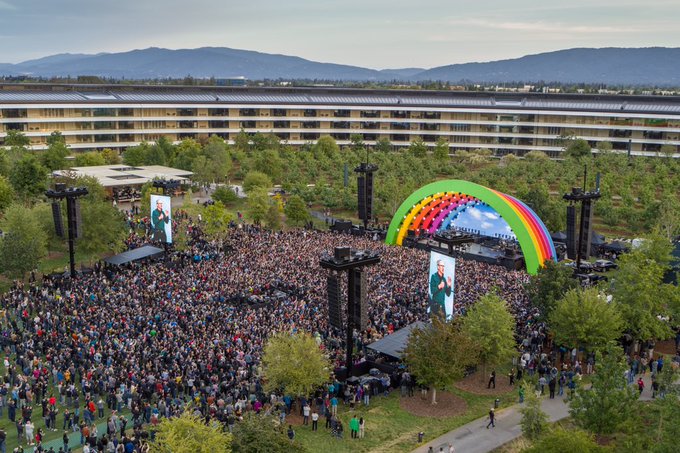
Apple Park Rests on 692 Individual Steel Saucers to Protect From Earthquake Damage: NYT
In what seems proper for a building often referred to as a spaceship, Apple’s $5 billion circular Apple Park campus in Cupertino, California doesn’t actually rest on the surface of the planet.

That’s according to a new report from the New York Times that offers insight into the earthquake safety measures that were part of the construction of Apple Park, one of the few buildings in the entire United States to use base isolation against earthquakes.
Instead of resting on the ground, Apple Park is built on top of 692 individual massive stainless-steel saucers located two stories underground. These saucers are intended to protect the building’s foundation from natural disasters, such as earthquakes, which are prone to the area. In the event of an earthquake, the campus is able to shift up to four feet on those saucers.
According to Apple design chief Jony Ive, he, along with the late Apple co-founder Steve Jobs, modeled the design after similar ones in Japan. The Asian country has thousands of buildings built in the same manner as it is very prone to such natural disasters.
Apple Park was incredibly expensive to construct — $5 billion USD — and features massive, four-story glass windows, a dedicated event theatre, and a roof covered entirely by solar panels.
As such, it’s no wonder Apple wants to protect its investment from Mother Nature.
Read the New York Times‘ entire report on Apple Park here.

